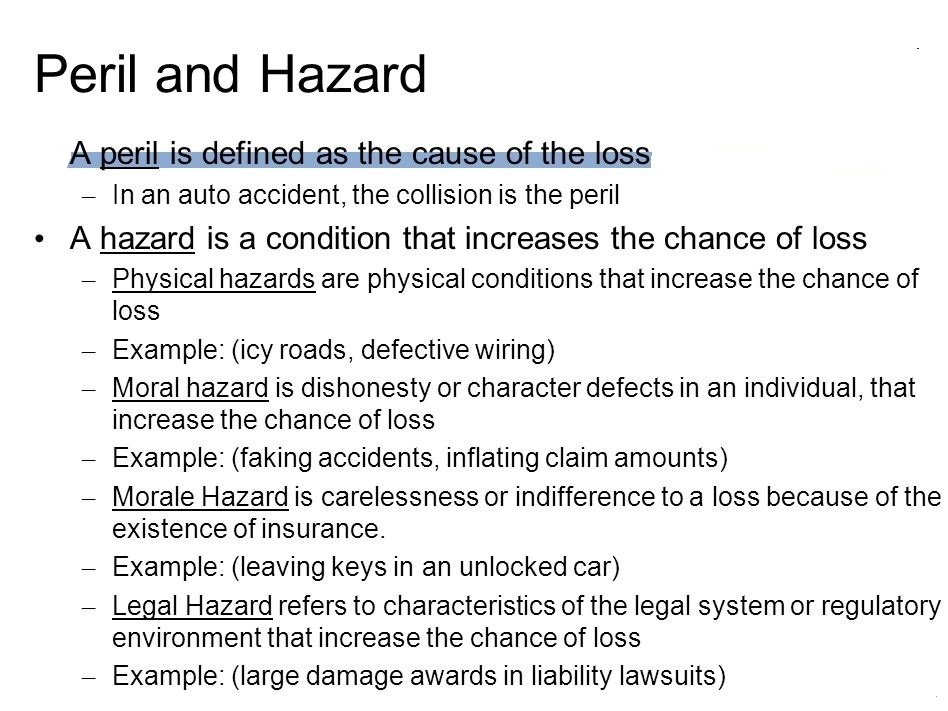Risk is the chance of loss, and peril is the direct cause of the loss. If a house burns down, then fire is the peril. A hazard is anything that either causes or increases the likelihood of a loss. For instance, gas furnaces are a hazard for carbon monoxide poisoning. A physical hazard is a physical condition that increases the possibility of a loss. Thus, smoking is a physical hazard that increases the likelihood of a house fire and illness.
Moral hazards are losses that results from dishonesty. Thus, insurance companies suffer losses because of fraudulent or inflated claims. The legal system is a moral hazard in that it motivates many people to sue simply for financial profit because of the enormous amount of money that can sometimes be won, and because there is little cost to the plaintiff, even if he loses. A good example is the current asbestos litigation, which has bankrupted many companies, even though very few plaintiffs show any real evidence of disease, and are unlikely to ever develop any disease that can be shown, by the preponderance of the evidence, to have resulted from asbestos exposure. This type of moral hazard is often referred to as legal hazard. Legal hazard can also result from laws or regulations that force insurance companies to cover risks that they would otherwise not cover, such as including coverage for alcoholism in health insurance.
Insurance can be regarded as a morale hazard because it increases the possibility of a loss that results from the insured worrying less about losses. Therefore, they take fewer precautions and may engage in riskier activities because they have insurance. A good example of morale hazard is when the federal government bails out financial institutions who have made bad decisions. Many financial institutions have taken significant risks in the recent subprime debacle by buying toxic instruments, such as CDOs and mortgage-backed securities based on subprime mortgages that paid high yields, but were extremely risky. The financial institutions have considered themselves too big to fail in other words, if things started going badly, then the federal government would step in to stop their collapse for fear that the whole financial system will collapse, which is exactly what the federal government did in September, 2008. Freddie Mac and Fannie Mae have both been taken over by the government, and American International Group (AIG) has been propped up by an infusion of $85 billion of taxpayers’ money. AIG sold credit default swaps on mortgage-backed securities to buyers, mostly banks, thinking that they could collect the premiums, but would never have to actually to pay for defaults but if they were wrong, then the government would save them, because otherwise the banks that had bought that credit default protection could also possibly fail. As recent events have demonstrated all too clearly, this federal government “insurance” creates a morale hazard for financial institutions taxpayers pay the premium, but the big financial institutions, with their overpaid CEOs and managers, receive the benefits.
